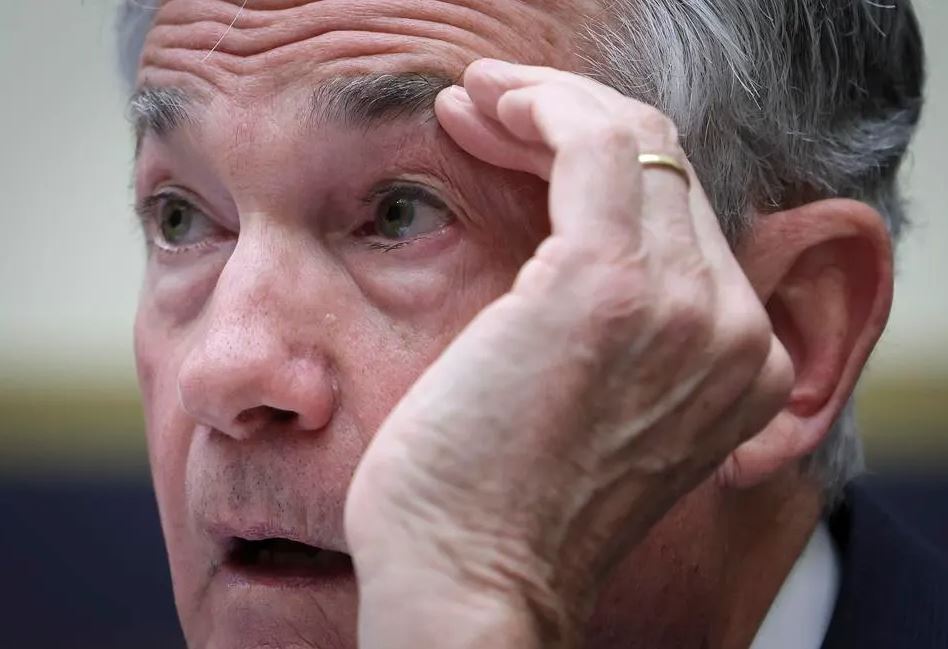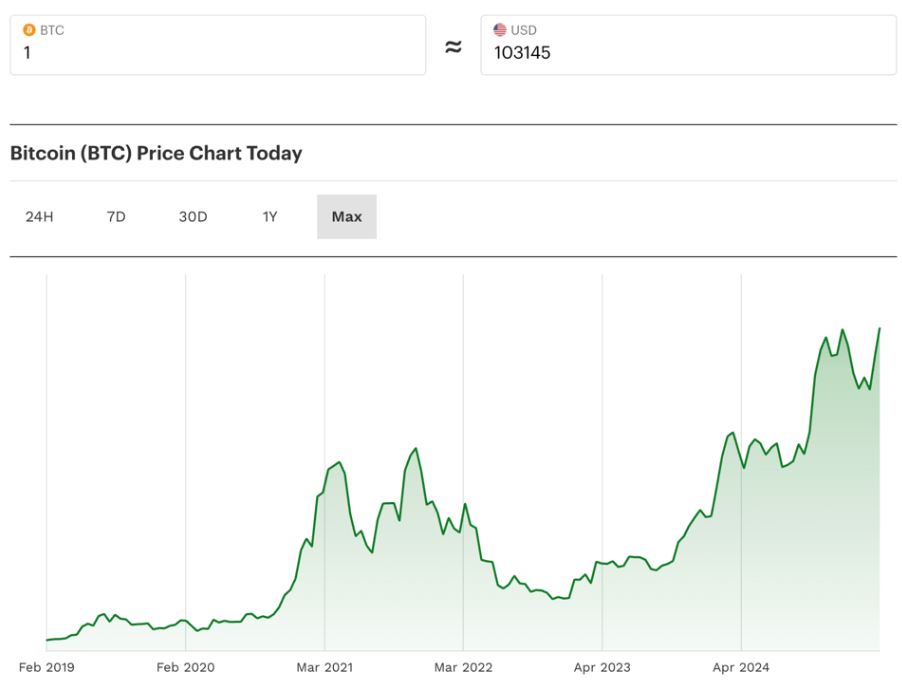
The crypto world is once again in the spotlight. Bitcoin has soared past $100,000 this week, a level it hadn’t touched since February. As investors cheer this major milestone, a powerful mix of geopolitical tension, economic warnings, and fresh interest in digital assets is setting the stage for what some experts call a “financial earthquake.” If predictions are right, Bitcoin could one day overtake gold’s $20 trillion market cap—with some bulls even eyeing a future $1 million valuation per coin.
Bitcoin Surges Back to Six Figures
Bitcoin’s dramatic climb above $100,000 this week caught many traders by surprise. It marked the first time the flagship cryptocurrency returned to this level since February. A key voice behind this momentum is David Sacks, former PayPal executive and newly appointed crypto advisor to U.S. President Donald Trump. Sacks recently made a rare public prediction on Bitcoin’s price, further fueling investor enthusiasm.
Market sentiment is also being supported by ongoing macroeconomic shifts. U.S. Federal Reserve Chair Jerome Powell chose to hold interest rates steady this week, but many expect a loosening cycle to begin again by summer. Projections point to rate cuts totaling 75 basis points throughout 2025. This expectation of lower rates is encouraging investors to seek alternative assets like Bitcoin and gold.
$2.5 Trillion Risk to the U.S. Dollar
But the Fed’s policy isn’t the only concern. Stephen Jen, CEO of Eurizon SLJ Capital, and economist Joana Freire issued a stark warning in a recent note obtained by MarketWatch. They highlighted a potential $2.5 trillion “avalanche” of dollar holdings at risk of being sold off by key U.S. trading partners in Asia. This includes reserves held by China, Taiwan, Malaysia, Vietnam, and others.
Their concern? A weakening dollar, driven by Fed rate cuts and a rebound in China’s economy, may trigger a sharp sell-off. Asian currencies like the Taiwan dollar have already spiked, possibly signaling the beginning of this shift.
“The overhang of liquid dollar holdings is just too large,” Jen and Freire wrote. “If the dollar weakens, the Fed cuts interest rates, and China stages a cyclical rebound, there will be others [who sell], we predict.”
Such a move could heavily damage the U.S. dollar’s global dominance, but it might also drive fresh capital into crypto markets, especially Bitcoin.

U.S.-China Trade Talks Rekindle Risk Sentiment
Another key factor moving markets is the revival of U.S.-China trade talks. On May 10, President Trump posted on Truth Social, hinting at a potential reduction in the high tariffs imposed on China in early April—tariffs that initially dragged BTC and stock prices down.
“80% tariff on China seems right,” Trump said, before noting that final decisions rest with Treasury Secretary Scott Bessent, who will represent the U.S. in trade discussions held in Geneva, Switzerland.
In response, China agreed to attend the preliminary talks. A spokesperson from China’s U.S. Embassy confirmed the talks were “being held at the request of the U.S. side,” signaling some willingness to de-escalate tensions.
Crypto analysts welcomed the move. Yuya Hasegawa of Tokyo-based Bitbank cautioned that the Bitcoin market remains fragile: “If neither side shows willingness to compromise, it could dampen the current risk-on mood and weigh on the BTC market heading into the weekend.”
David Morrison from Trade Nation added, “Sentiment got an additional lift from the prospect of this weekend’s trade talks.” But he also warned that optimism could fade quickly. “There’s already a lot of good news priced in. If these discussions disappoint, investors could reduce exposure to risk assets like Bitcoin.”
Bitcoin as a Hedge and Store of Value
The recent price rebound isn’t just about speculation. A growing number of institutional investors are now viewing Bitcoin as a serious alternative to traditional assets. Geoff Kendrick, head of crypto research at Standard Chartered Bank, noted a major shift in investor mindset.
“Bitcoin’s dominant story has changed again,” he said. “It was correlation to risk assets. It then became a way to reposition out of U.S. assets. Now it’s about flows—from ETFs, from state treasuries, and even sovereign wealth and pension funds.”
Kendrick even admitted that his $120,000 target for Q2 might be too conservative.
This growing wave of institutional adoption is backed by real movement. Several U.S. states have begun passing laws that allow their treasuries to hold BTC. At the same time, spot Bitcoin ETFs have seen rising inflows, signaling that both retail and large investors are steadily increasing their exposure.

A Bold Prediction: Bitcoin to $1 Million?
While most market watchers are focused on the $120,000–$150,000 short-term range, some are thinking much bigger. Bill Miller IV, Chief Investment Officer at Miller Value Partners, made a bold prediction in a CNBC interview. He believes Bitcoin could climb all the way to $1 million per coin.
“Bitcoin’s back in the six-figures with a lot of room to go,” he said. “If you compare its primary use case—a check and a balance on the lack of accountability in fiat unit creation—we still have a long way to go.”
Miller argues that Bitcoin’s “functional superiority” over fiat currencies will eventually allow it to surpass gold in total market value. With gold’s market cap around $20 trillion, that would mean a Bitcoin price in the seven figures.
Looking Ahead
The week’s events mark a turning point for Bitcoin and the broader crypto market. Between the looming threat of a dollar sell-off, rising institutional interest, and the restart of U.S.-China trade talks, investors are bracing for volatility—and possibly historic gains.
But risks remain. Trade tensions could flare again. The Fed could change course. And investor optimism can quickly turn to fear. Still, the outlook for Bitcoin is stronger than it has been in months.
Whether or not it reaches $1 million, BTC has once again captured the attention of markets around the world. For now, all eyes are on Washington, Beijing, and Geneva. What happens next could reshape the future of money itself.























